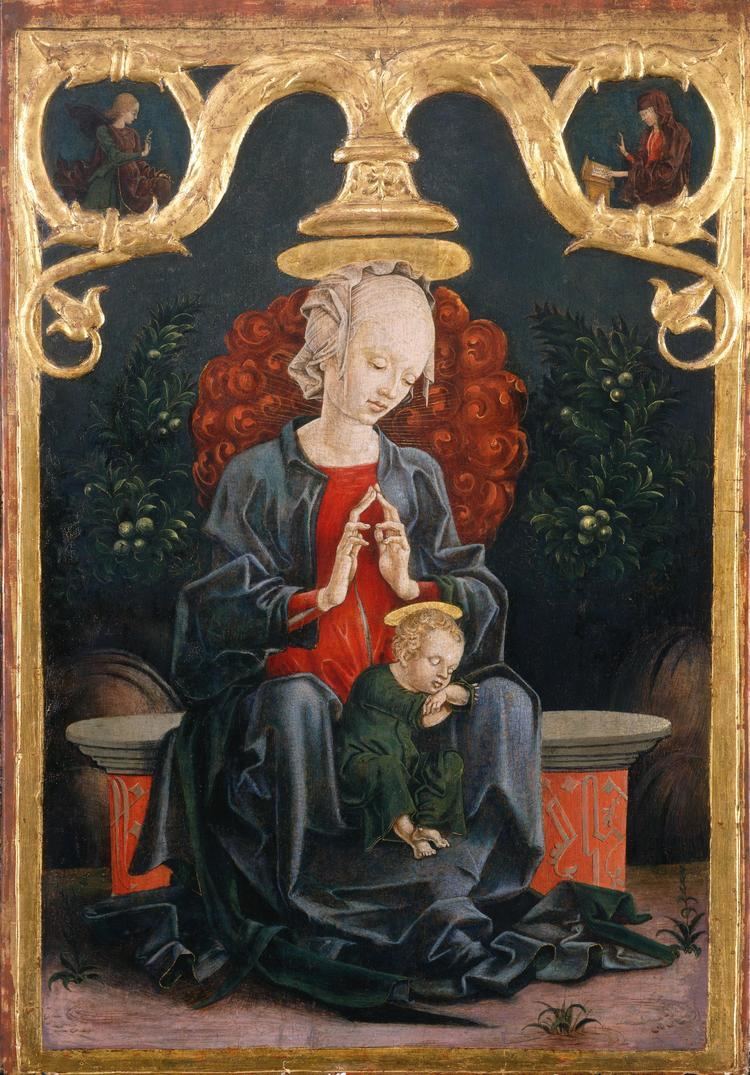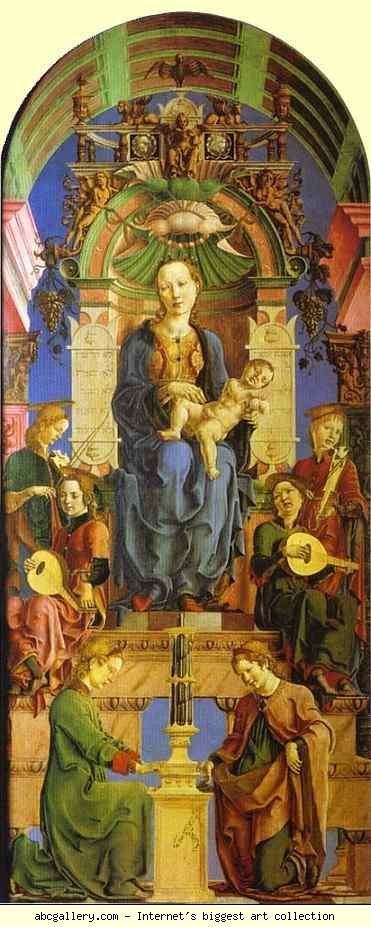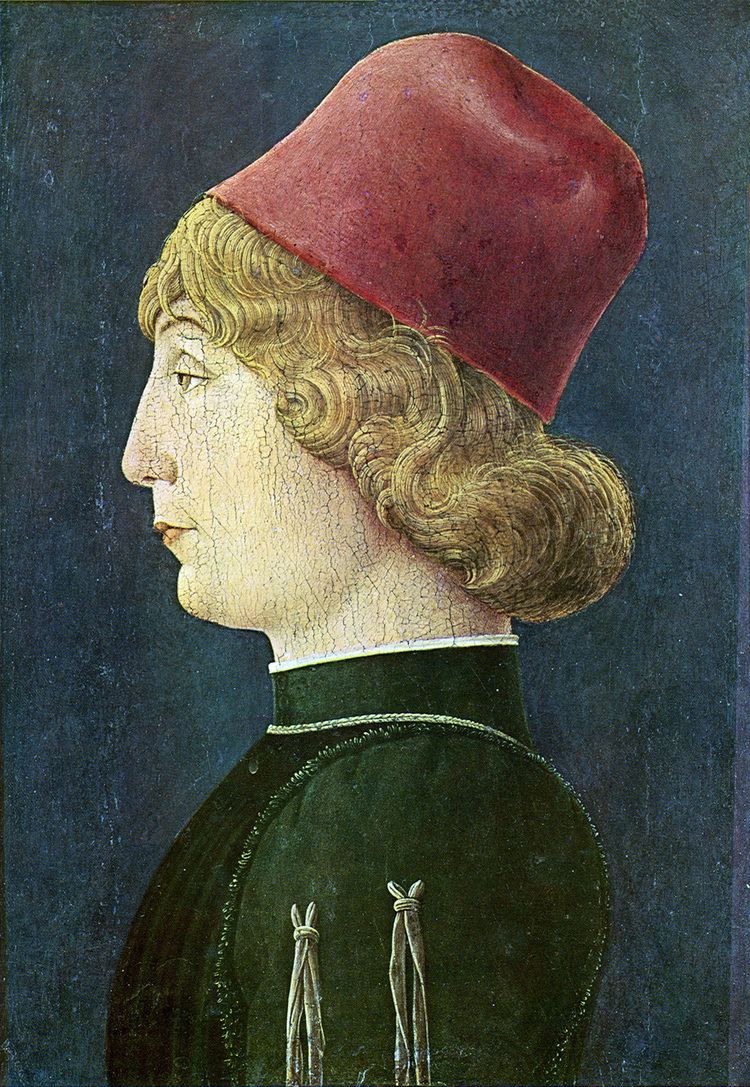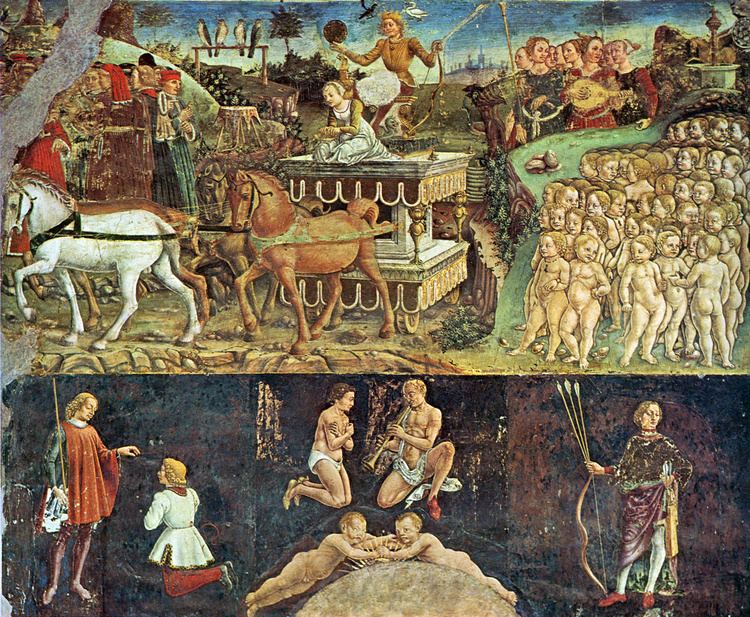Nationality Italian Known for Painting | Died 1495, Ferrara, Italy Name Cosimo Tura | |
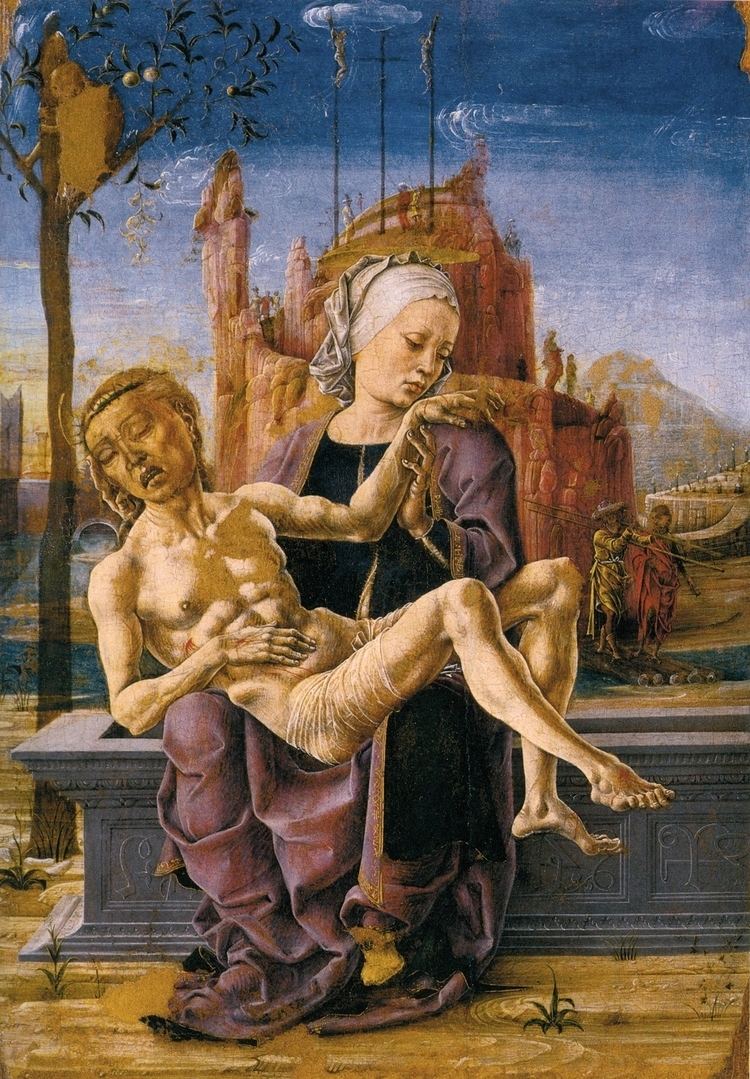 | ||
Born c. 1430 Ferrara Movement Quattrocento or early-Renaissance Artwork Polittico Roverella, Martirio di san Maurelio, Giudizio di san Maurelio, Madonna dello Zodiaco, San Girolamo penitente Similar People Dosso Dossi, Antonio da Correggio, Lucrezia Borgia, Giorgione, Titian | ||
Periods Renaissance, Quattrocento | ||
Anon su l herba fresca cosimo tura francesco del cossa
Cosimo Tura (c. 1430 – 1495), also known as Il Cosmè or Cosmè Tura ([koˈzmɛ ˈtuːra]), was an Italian early-Renaissance (or Quattrocento) painter and considered one of the founders of the School of Ferrara.
Contents
- Anon su l herba fresca cosimo tura francesco del cossa
- Cosimo tura top 7 facts
- Selected works
- References
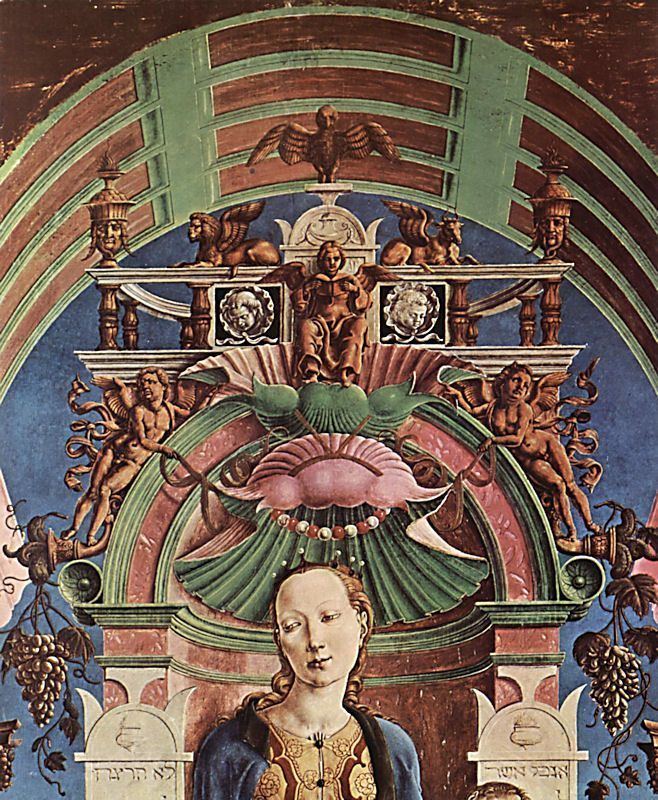
Born in Ferrara, he was a student of Francesco Squarcione of Padua. Later he obtained patronage from both Dukes Borso and Ercole I d'Este. By 1460, he was given a stipend by the Ferrarese Court. His pupils include Francesco del Cossa and Francesco Bianchi. He appears to have been influenced by Mantegna's and Piero della Francesca's Quattrocento styles.
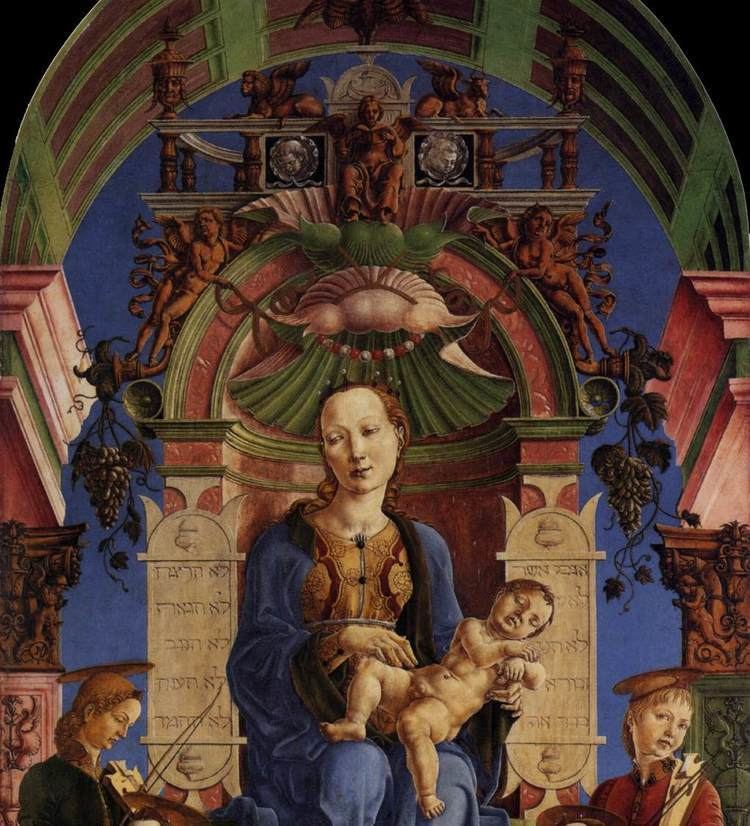
In Ferrara, he is well represented by frescoes in the Palazzo Schifanoia (1469–71). This pleasure palace, with facade and architecture of little note, belonged to the d'Este family and is located just outside the medieval town walls. Cosimo, along with Francesco del Cossa, helped produce an intricately conceived allegorical series about the months of the year and zodiac symbols. The series contains contemporary portraits of musicians, laborers, and carnival floats in idyllic parades. As in Piero della Francesca's world, the unemotive figures mill in classical serenity.
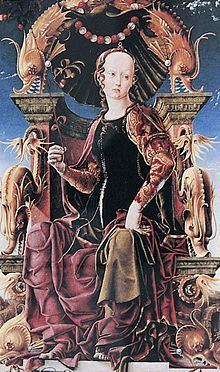
He also painted the organ doors for the Duomo showing the Annunciation (1469). He collaborated in the painting of a series of "muses" for a Studiolo of the Palace Belfiore of Leonello d'Este in Ferrara, including the allegorical figure of Calliope at the National Gallery (see image). While the individual attributions are often debated, among the artists thought to complete the series were Angelo di Pietro da Sienna, also called Maccagnino or Angelo Parrasio, and Michele Pannonio.
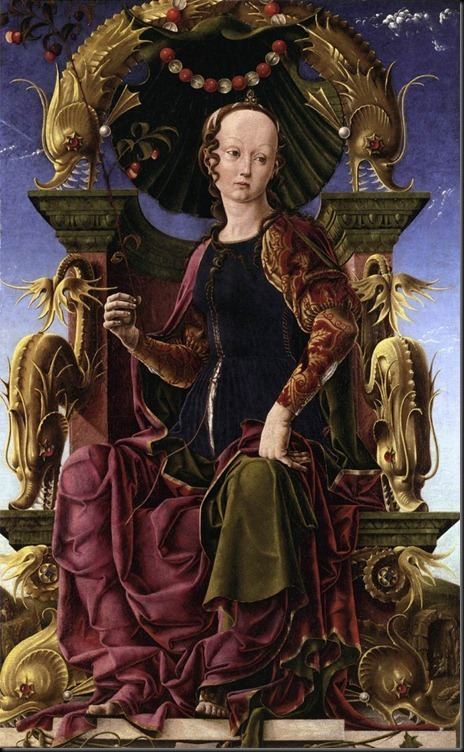
Cosimo tura top 7 facts
Selected works
